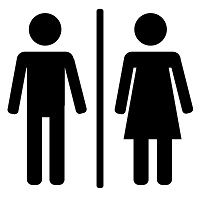Article
Cross-Sex Hormonal Treatment Increases Bone Mineral Density in Transgender Patients
Author(s):
Estrogen has a positive impact on bone mineral density (BMD), and although it’s known that testosterone increases bone size, its effect on BMD is unclear.

Estrogen has a positive impact on bone mineral density (BMD), and although it’s known that testosterone increases bone size, its effect on BMD is unclear.
Chantal M Wiepjes, PhD student, and colleagues from VU University Medical Center in Amsterdam, Netherlands set out to uncover how cross-sex hormonal treatment (CSHT) in transgender patients impacts BMD. Their findings were presented during a poster session at the Endocrine Society’s annual meeting (ENDO 2016) in Boston, Massachusetts.
Using 205 adults who completed one year of CSHT, the researchers examined male-to-female (MtF) and female-to-male (FtM) transitions. The 98 MtF and 107 FtM participants underwent a dual-energy X-ray absorptiometry to measure lumbar spine BMD at baseline and after one year of the CSHT.
- MD Magazine is on Facebook, Twitter, Instagram, and LinkedIn!
FtMs received intramuscular testosterone undecanoate (1000mg/12 weeks), testosterone gel (50mg/day), or testosterone esters intramuscular (250mg/two weeks). MtFs had oral estradiol valerate (2 to 4mg/day) or an estradiol patch (200ug/week) — most of these participants also received cyproteronacetate (50mg/day) at the same time.
After one year, the average lumbar spine BMD in FtMs went from 1.02 g/cm² to 1.03 g/cm² — an average 1.12% increase. The mean lumbar BMD also increased in MtFs from 0.98 g/cm² to 1.01 g/cm² – an average 3.71%.
“After one year CSHT the spine BMD increased in both groups, but more in MtFs,” the authors concluded. “This confirms the role of estrogen on bone in biological males.”
Also on MD Magazine >>> The Latest News in Diabetes & Endocrinology




